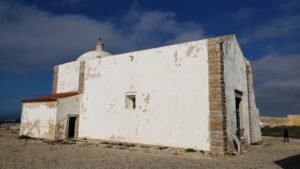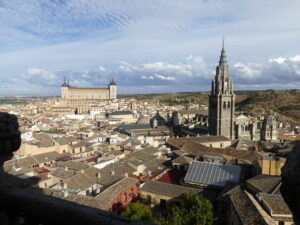In brief: The Sagres’ peninsula is exciting to visit because it still feels like that wind-smitten western limit of Europe from which Henry the Navigator launched so many exploratory ships.
Sagres, in the west of the Algarve, was considered the end of the known world at the start of the Renaissance in Europe. There one learns about the Portuguese Prince Henrique (say, to the tune of a fairly well known song…):
I’m Navigator Henry, I am
Navigator Henry, I am I am
I set loose many ships to explore,
From Sagres past Isla Madeira and Azores.
And each one found trading lands and seas;
Western Africa and its North were just a breeze.
Now you’ll find me at Batalha, dead I am;
Navigator Henry I am.
Here, the 15th century Prince, Henry the Navigator, helped launch Europe’s age of exploration by developing technology for sailing, navigating and mapmaking. His school then taught the use of these tools, as well as navigation skills. His well-funded sailors brought great wealth back to Portugal by opening up trade routes down the African coast, but dishonorably promoted slavery as well. Soon his technologies and techniques helped Vasco de Gama, Columbus, Magellan and others discover the rest of the world.
The peninsula west of Sagres is an exciting place to visit because you can feel you’ve truly reached the wind-smitten western limit of Europe. Strictly, though, it’s a southwest corner whose white cliffs extend westward to Cabo de São Vicente, the real westernmost point a few kilometers away. There, as here, the cliffs relentlessly weather the waves and winds below.
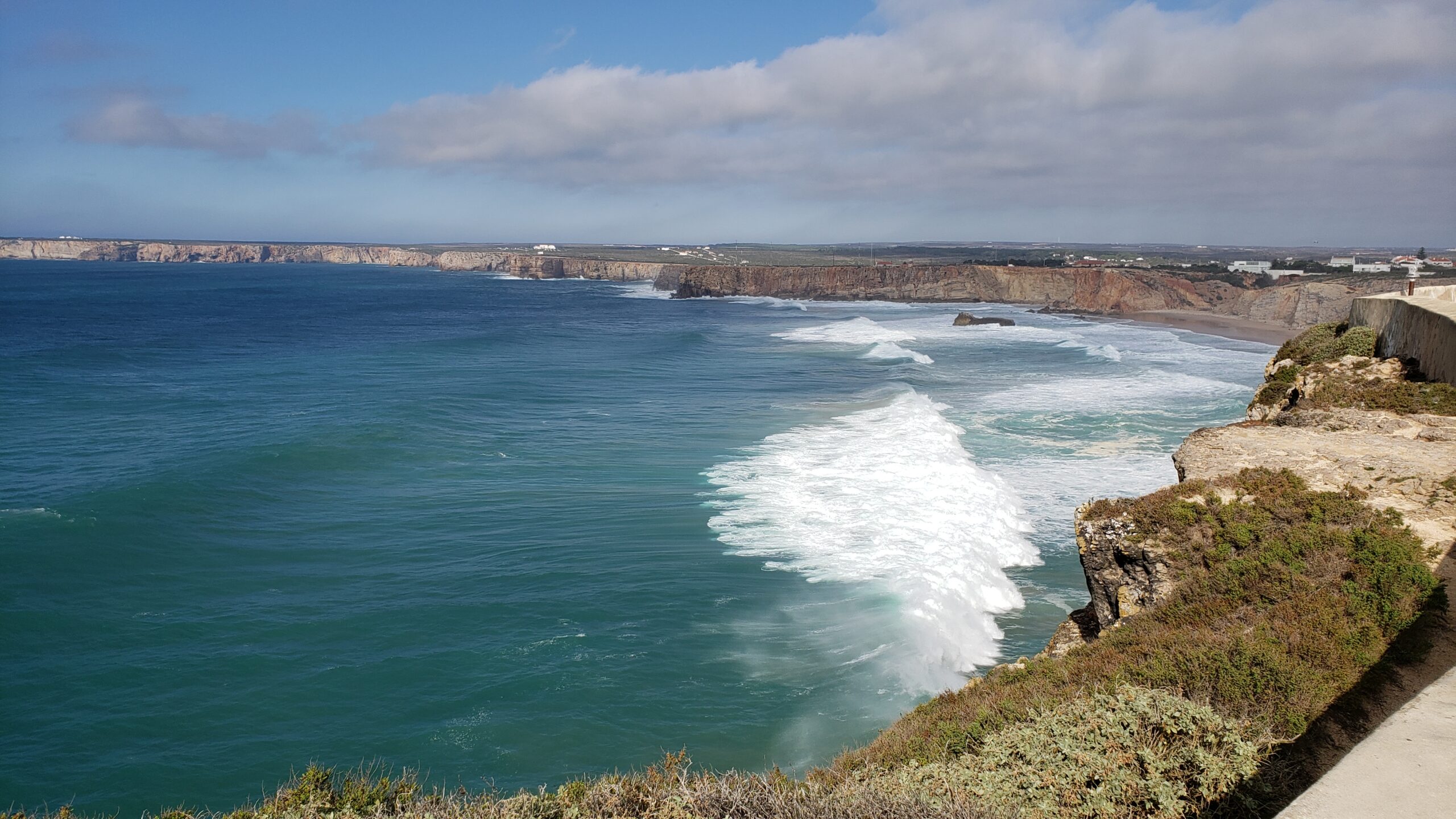
The Fortaleza de Sagres on the peninsula dates from Prince Henry’s time, but its current form is much later in construction. It consists of just one wall and a broad platform because the steep cliffs at the Atlantic shore offered a natural defense from the sea. That circular section on the right, Rosa dos Ventos, was perhaps a solar clock or some kind of wind compass. Despite its remote location, the fort is one of the most visited monuments in the Algarve.
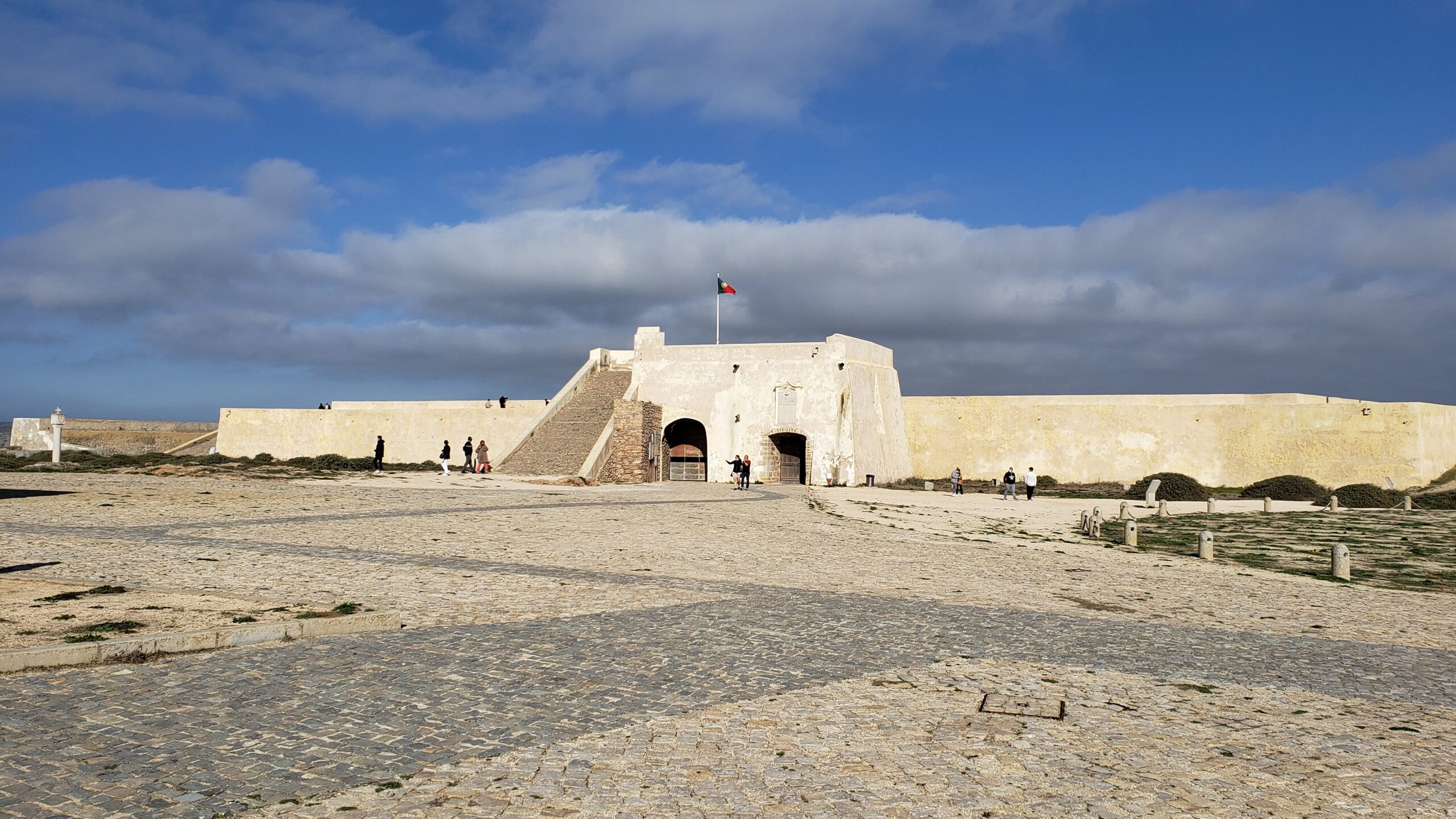
As we make the long walk along the cliff edge, we approach the lighthouse, surprisingly short in size because the elevation of the cliffs gives sufficient height. All around the cliffs, locals were casting lines from long poles into the frothy waters far below. In the middle of the far right cliff, you can just see a few of them seemingly hanging off. All the fishing folk seemed indifferent to the steep vertical drop, but these few proved to be standing on a lot safer spot than we thought.
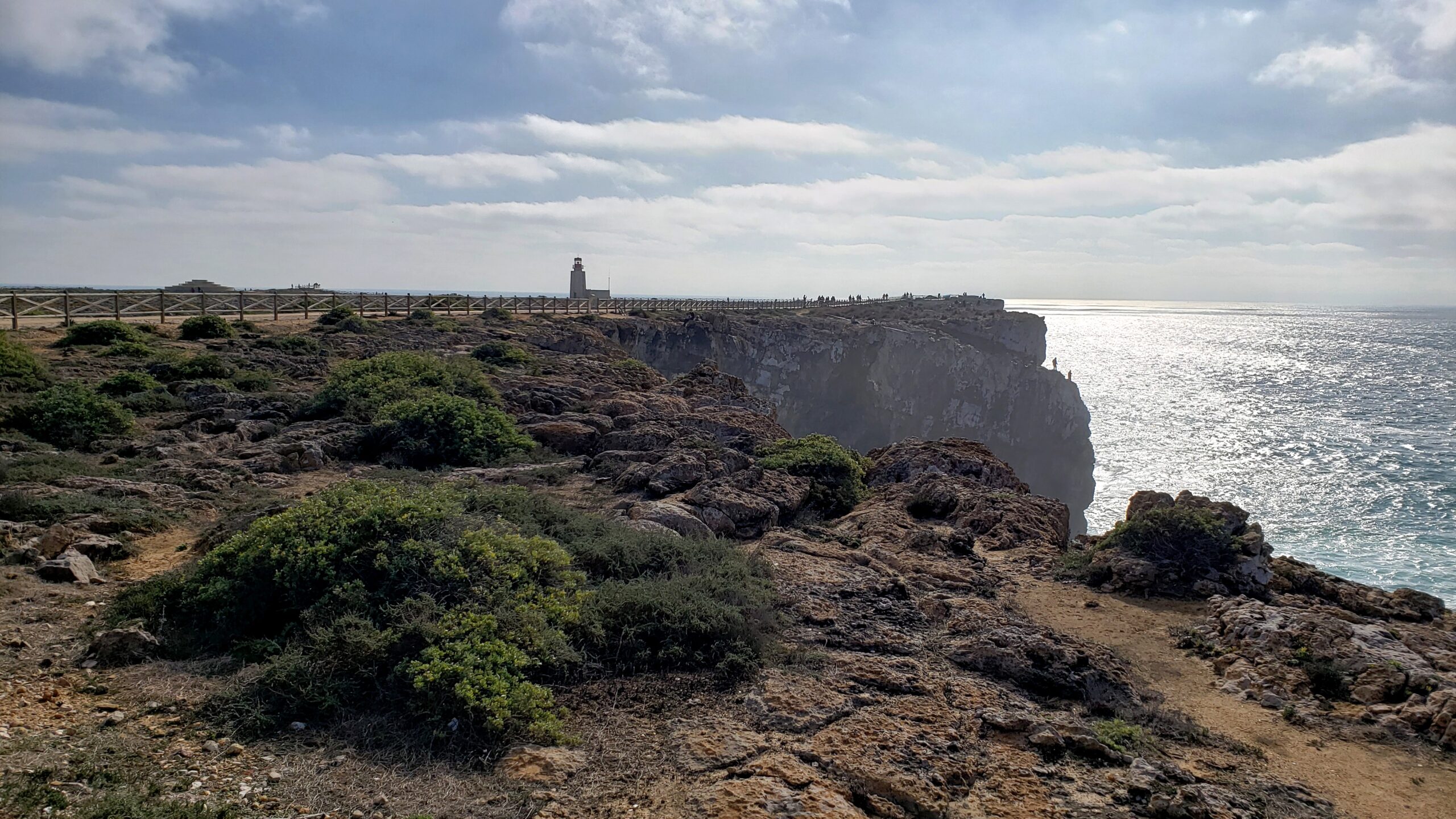
Posing at the lighthouse and watching for the return of exploratory ships, despite the chill winds.
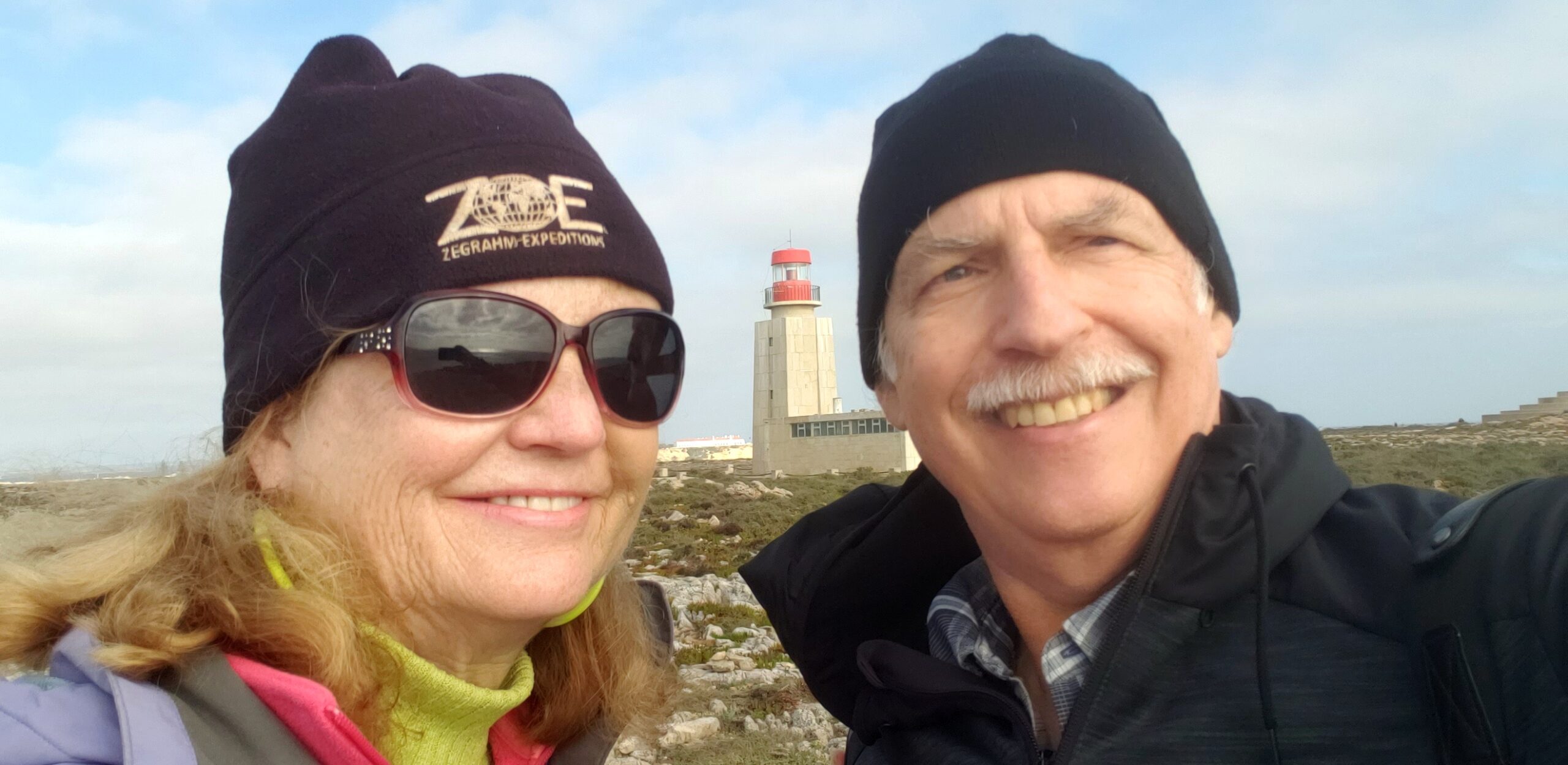
Another couple contemplates what was once the edge of the world known to Europeans, while standing on a naturally formed limestone platform.
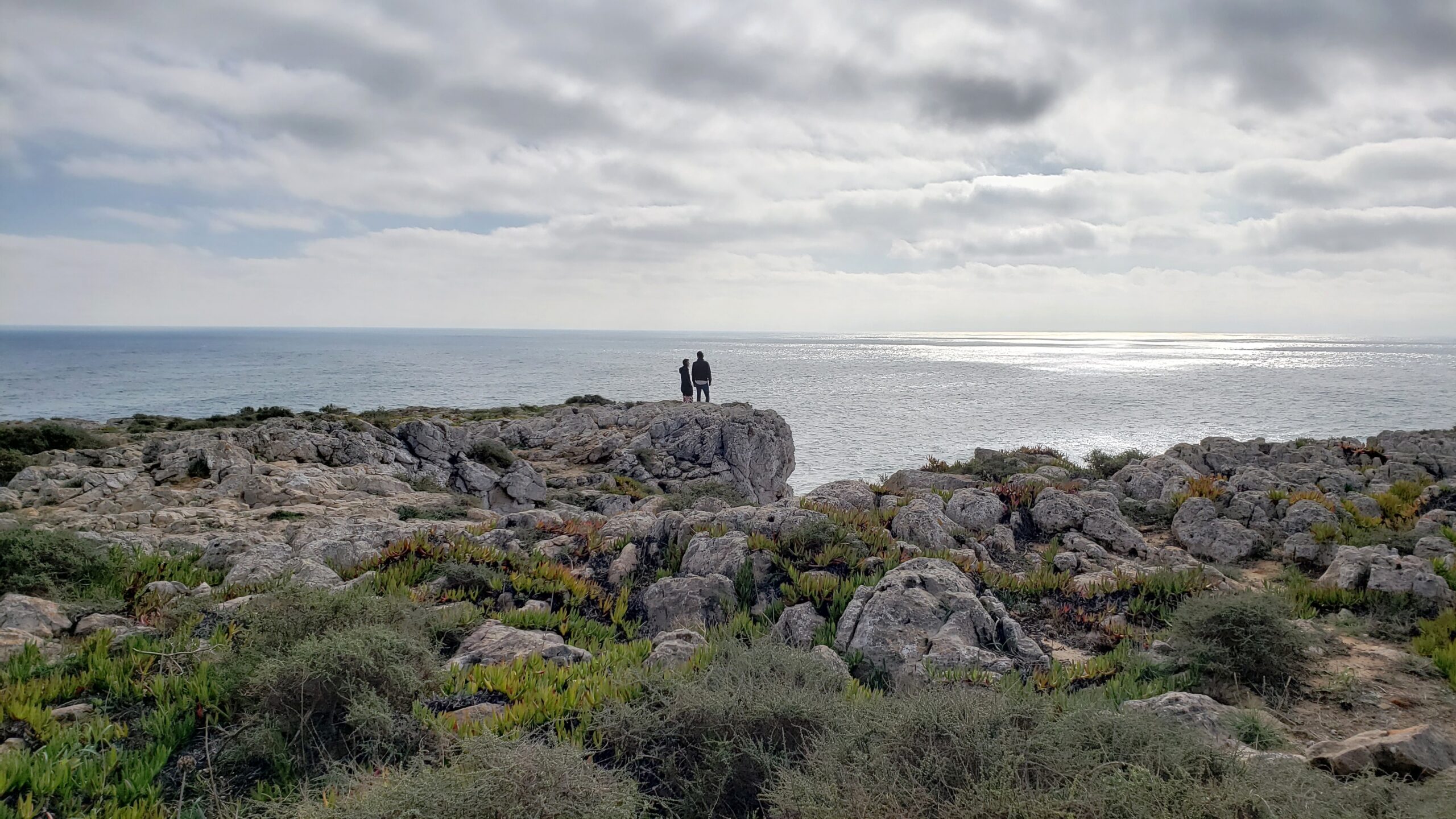
This spiral structure is a sound chamber, called Voice of the Sea. It was built over one of the deep limestone sinkholes and caverns into which the sea below bursts explosively. The passageways amplify the sea’s roar as one circles the caracol, particular at its center.
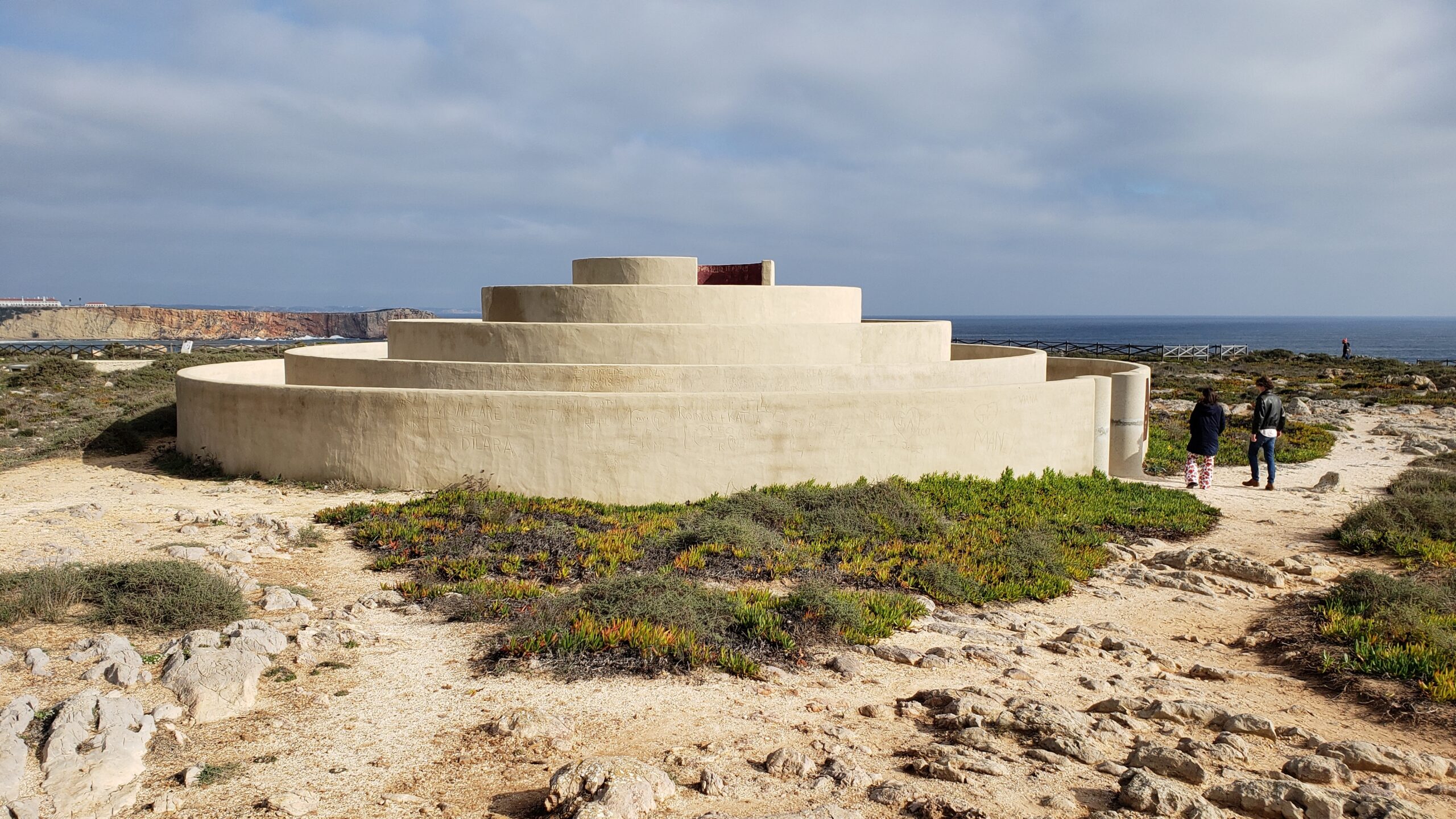
The simple church, named for São Vicente, patron saint of Lisbon, also dates from Henry’s time, though not quite in this form. Inside is a lovely 17th c. wood image of the saint, wearing a fancy painted frock and standing in a fire. He carries a boat not unlike the one that brought his relics to Lisbon, or at least like the omnipresent city symbol.
Inside the fort’s church are three nicely carved burial stones marking the graves of captains of the fort. The two on the left date from the 17th century. The one on the right honors a captain who fought against Francis Drake and died in 1589.
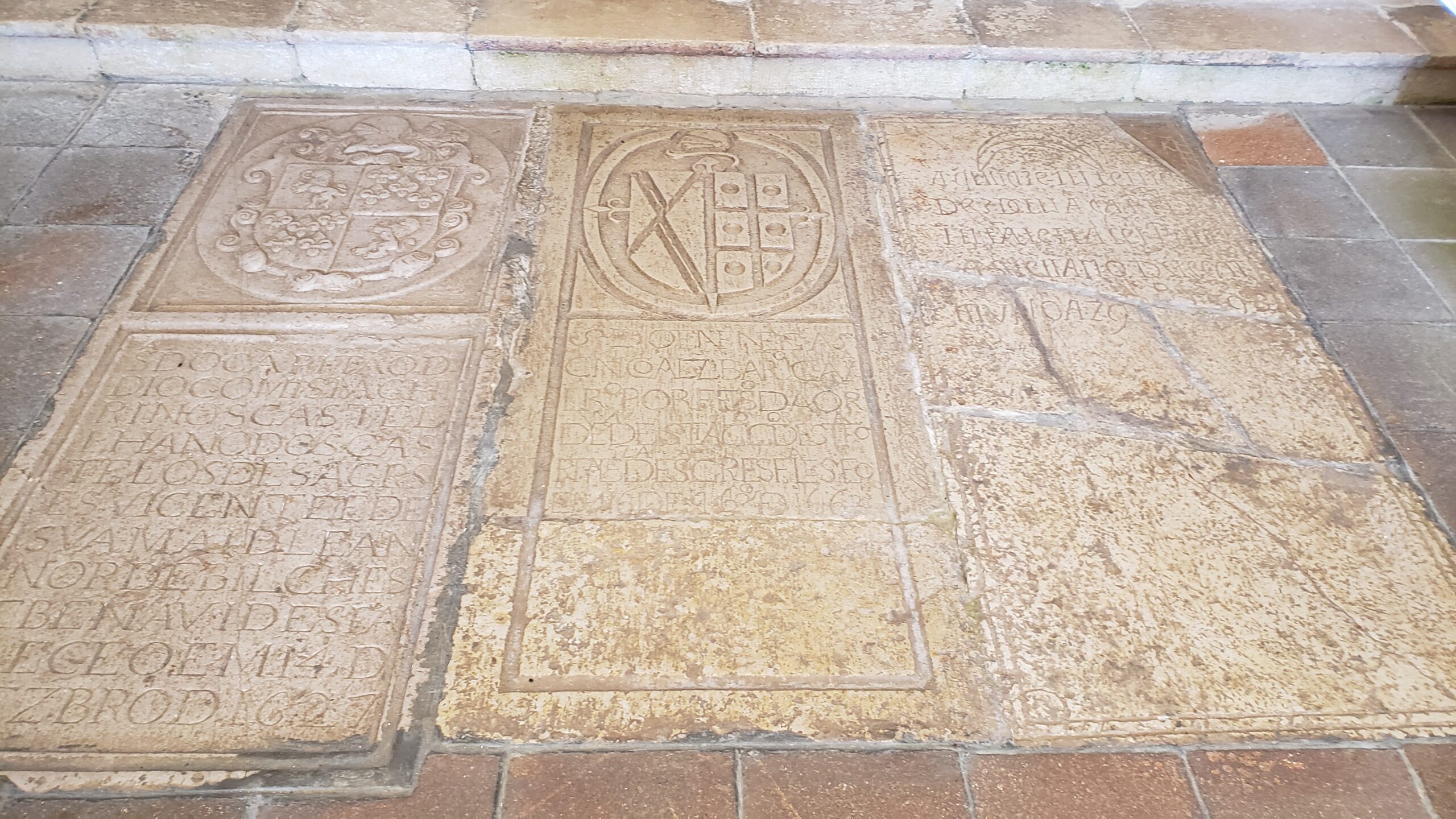
Colorful cliffs adorn the beaches on the way out of Lagos to Sagres. In this direction, easterly, you can see a man-made arch reaching across a gap. In the other direction, you can peer across the water and see the western towns of the Algarve, like Portimão.
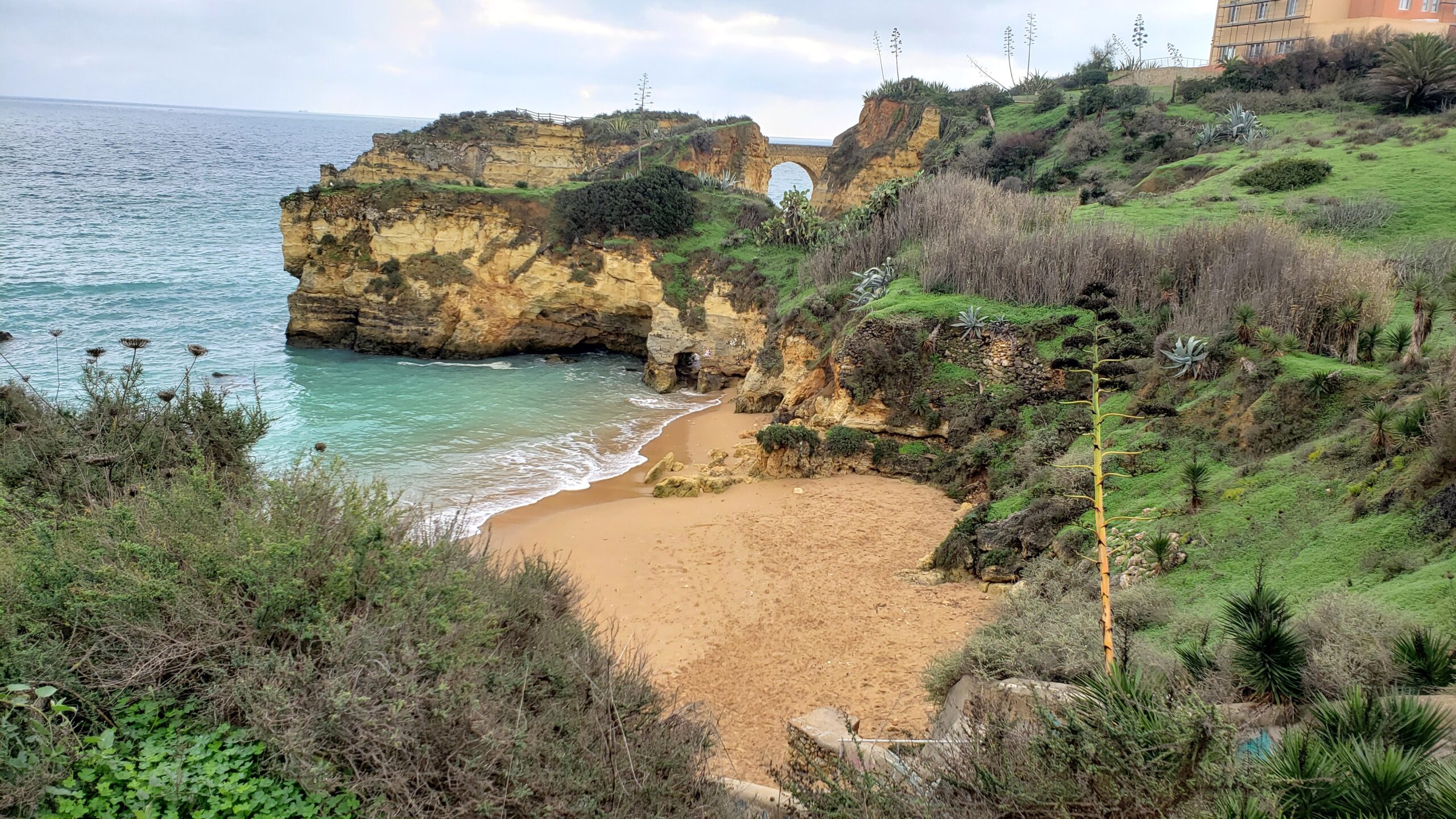
Sagres has traditionally been considered Henry’s center for exploration, and it feels like the right place, but more likely it was the port here according to historians.
(To enlarge any picture above, click on it. Also, for more pictures from Portugal, CLICK HERE to view the slideshow at the end of the itinerary page.)


